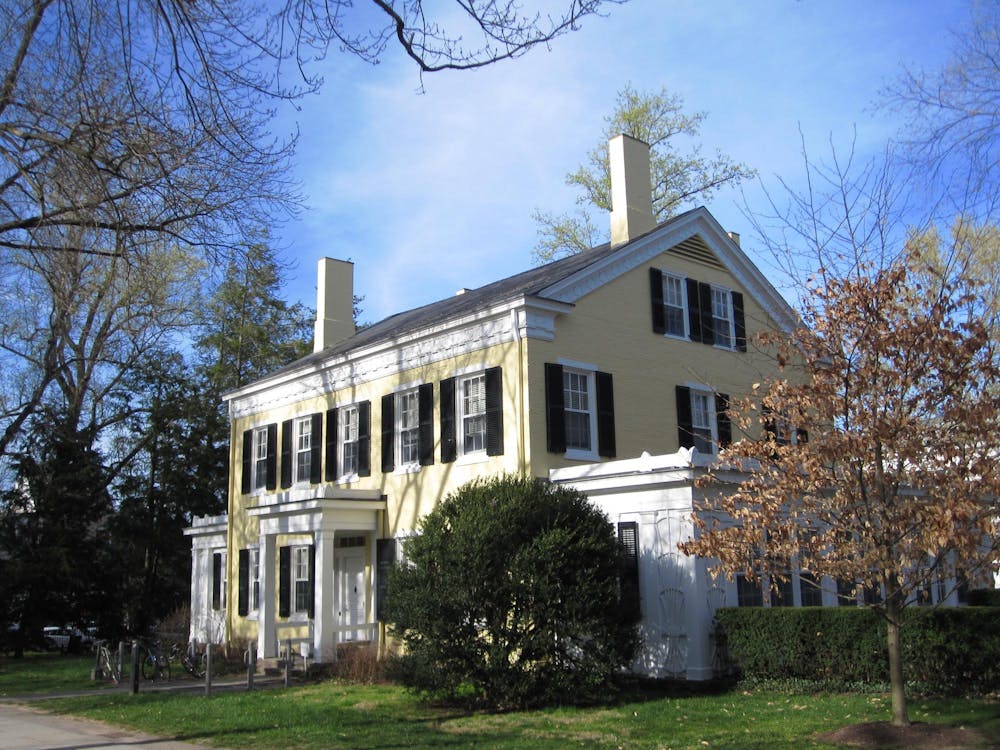A University engineering class is working to build a new kind of sustainable house, and it's taking inspiration from the honeycomb.
The shelter is called the “B Home” because the shape resembles the cellular structure of a beehive.
The course, EGR 251: Engineering Projects in Community Service, or EPICS, is based on a community-based learning model in which students apply engineering to real-world projects. For the past three years, one group within the course has been working on conceptualizing and designing the B Home.
Once completed, students in the course think the model can be put to use in developing countries for disaster relief. Additionally, the honeycomb shape of the design is one of the first of its kind, and its designers said it presents structural advantages over traditional shelter designs.
Pete Abrams, a Trenton-based artist who specializes in creating art out of recycled material, initiated the B Home project in 2005 when he was inspired to create a home using the hexagonal shape.
“The honeycomb lattice is an inspiration from nature,” Abrams said. “The inspiration for the project, though, came from this overwhelming need for a safe, affordable shelter.”
The B Home consists of many different housing units that can be stacked on top of each other in the shape of a beehive. Each unit, designed for one person, is an octagonal cylinder that has a dome-like ceiling, a bed that folds into a couch and a large window that allows in natural light. Each room is 7 feet tall, 8 feet wide and 10 feet long.
In the fall of 2010, Princeton students in EPICS joined the project and began working with Abrams and a Trenton-based eco-friendly design and construction company called Modern Metal Works. The three groups are working together to develop the concept of the B Home and to deploy it to house people displaced by disasters.
The class is instrumental in the project because, while Abrams’ artistic vision inspired the idea, he doesn’t have engineering or scientific skills that are needed to undertake engineering design or material selection, according to EPICS professor Ismaiel Yakub.
Yakub said the B Home provides advantages in housing individuals displaced after disasters. For example, tents last only six months, so Yakub wants to design the B Home to be structurally stable for two to five years until the individuals can relocate.
Yakub said the honeycomb shape is not only aesthetically appealing, but it also provides a realistic advantage over the typical rectangular shape.
“One lovely thing about the honeycomb shape is that it allows for easy stacking, as opposed to having like a box-like shape,” Yakub said. “And it also can give you a very high surface area compared to just having the regular box-shape house.”

Last year’s class built a prototype of the B Home, which is currently housed in the FitzRandolph Observatory. This year’s class has been adding onto this model.
The course is being funded by the Keller Center and has also secured a grant from the Kurtz Foundation. In total, Yakub said the course has a budget of about $6,000, which it uses in part to purchase materials.
“Part of what the Keller Center is trying to do is bridge the gap between technology and society so students across campus can come together to work on a project,” Keller Center Program Administrator Stephanie Landers said.
“And though they may come from different majors, using their brains together to come up with a solution to a problem is really beneficial,” she said.
Chemical and biological engineering student Stephen Cognetta ’15, who is taking Yakub’s course, says the class is important because it offers hands-on experience and has an impact on society.
“It really helped me get the technical skills to learn how to build a home,” Cognetta said. “Additionally, it’s for a good cause. It’s for community service, so I feel like I am giving back ... Sometimes it’s very busy; it’s very hard to do at Princeton, but I feel like this is a nice, structured way to help and give back to the community.”
The team is hoping to complete the project by the end of the year.
“We are hoping that by the end of the year we will have a home that will be ready to be deployed in cases like Haiti,” Yakub said.
Correction: Due to a reporting error, a previous version of this article misstated the major of Stephen Cognetta '15. He is a chemical and biological engineering major. The 'Prince' regrets the error.







